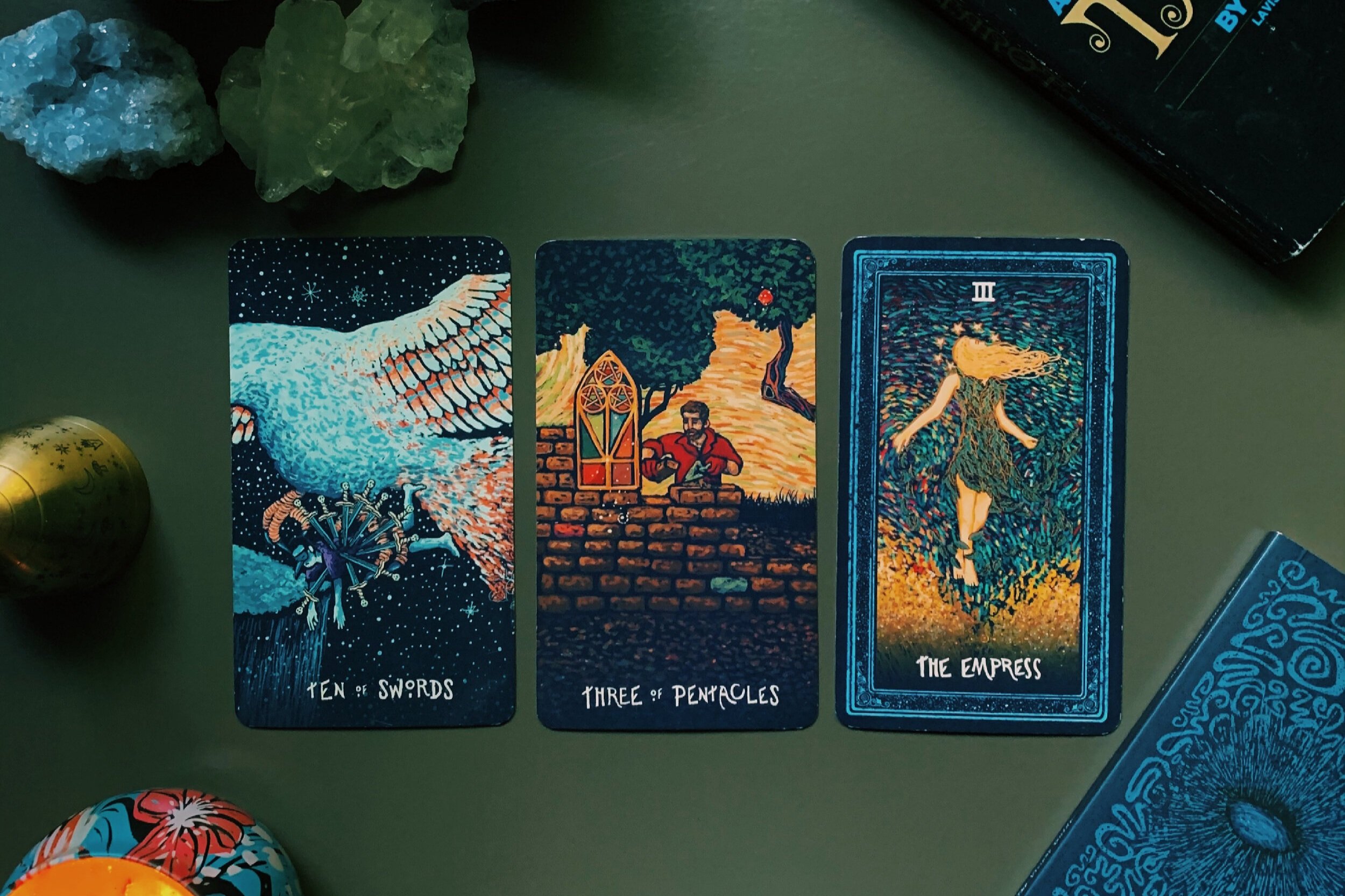How to Predict Timing in Tarot
Picture this: you’ve pulled, placed, and interpreted your tarot cards for a, let’s say, relationship.
You see a card indicating some sort of argument entering your life, pull a few extra tarot cards to understand why this may arise, how to approach it, and what may come of it. And now you’re left with one final question: when does it pop up?
Alongside tarot reversals, this topic is one that is frequently revisited by tarot readers and clients, and is not likely to be put down anytime soon as a hot pick of a debate.
But it doesn't have to actually be that complicated to predict timing in your tarot readings!
LET’S FIRST GO OVER THE BASICS:
In Any Tarot Reading, The Future is Not Set in Stone.
No matter if you can accurately predict a specific, particular event and hit your tarot reading with all of the different methods — be it astrological associations or the tarot spread from your favorite tarot books — the one constant across all tarot readings is change. Your prediction may foretell the most likely desired event or outcome, but your free will can always alter the outcome.
Tarot Readings Don't Always Need Timing
In my experience, some readings, even future readings, are better off without timing included. They also often add little to the productivity of a reading, save for some exceptions. Regardless, in many situations, it’s harmless to throw in a bit of timing, so I may do it if one is coming up naturally, but I prefer not to force anything.
The truth is that timing is tricky for the reasons listed above, and I say this to my clients whenever timing is included in their reading. The longer the time frame, the more opportunity someone also has to change things, even in small ways.
Such is why some readers opt not to do predictive readings, and some claim it’s “impossible” — free will is always a factor, and it’s not always something that can be … well, predicted. Keep this in mind before venturing into predictive readings, and remain open to the fact that you can be wrong. Often.
All of that said, here’s a few methods that I and other readers tend to read time with.
Timing & Predictive Tarot Methods
Ultimately, any or all timing methods will depend on the tarot reader, and there is no one "right way" or "wrong way" to go about it. You can use Major Arcana cards, place emphasis on Minor Arcana, all of the above, or none of the above.
1. Set the time frame first.
Say, “This set of events will happen within a year, a month, a week, etc.” Create the boundaries yourself first rather than being presented with all of these events that could potentially not be linear.
Example:
I want to know about something happening within the span of five days. I pull three cards with this timing in mind.
If I pull the Moon for the first card, the World for the next tarot card, and the Queen of Pentacles for the third card, then I know these are events that will happen sequentially over this exact frame of time. (Also, it looks like a bunch of positive change is on my way too, huh?).
2. Use a deck that specifies time.
Unfortunately, the deck I use for this no longer is available, but if you want to do predictive readings and can get your hands on a deck like the Only Time Will Tell Oracle, I’d highly recommend doing so.
If not, make your own! Give yourself a wide range of specific to vague options, and give the deck an option to, quite simply, not give you the time. Again, sometimes it’s better not to know.
3. Minor Arcana, Astrological Signs, & Pip Cards
As per the Thoth system, all tarot cards correspond to a particular zodiac sign (for example, the Knight of Swords is 21 degrees Taurus to 20 degrees Gemini). This goes for court cards and Major Arcana alike. In a way, using the astrological association is like having a set of predetermined tarot dates too. Especially if you're astrology-inclined, this method might appeal to those who prefer to lean on the stars for their tarot reading's backbone.
Alternatively, a common method utilizing Minor Arcana, seasons, and the tarot suits is as follows:
Wands: Hours or Days, Spring
Swords: Weeks, Autumn
Cups: Months, Summer
Pentacles: Years, Winter
In this method, you would then use the number assigned to the tarot card to gauge the timing. For example, if you pulled the Ace of Cups, this event would transpire in 1 month, or summertime.
Sometimes, I prefer to get a range of time to work with, especially if an event is more up in the air or not as time-sensitive. First, I can set the intention for my tarot spread to accommodate a range, and then instead of just one card, I could pull two.
In this method, let's say I pulled the Ace of Pentacles first and the High Priestess second. The Ace indicates "1" and Pentacles translates to "year." But because I also pulled this nifty second card, which is 2, now I can say the future timeline is "1-2 years."
Tarot Cards Aren't a Doom Sentence
Whether you’re reading for yourself and others, please do keep in mind and be sure to share the fact that cards are tools to help you grow and make changes, not predict an inevitable doom or success.
A predictive tarot reading can be awesome and show you when the fruits of your labor might pay off to give you that extra reassurance to keep going, or when it is that you might bump into a relationship even, but the power is always in your hands.




